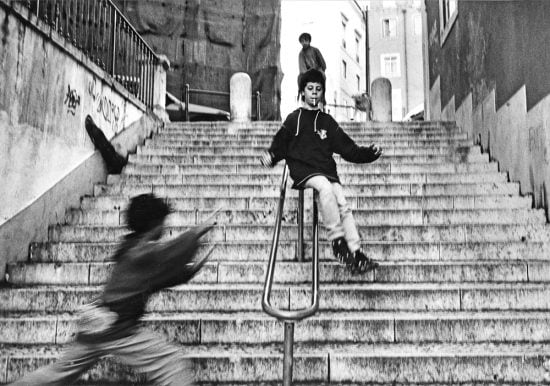Examine This Report on Street Photographers
Examine This Report on Street Photographers
Blog Article
Street Photographers Can Be Fun For Everyone
Table of ContentsStreet Photographers for BeginnersStreet Photographers Can Be Fun For AnyoneEverything about Street PhotographersIndicators on Street Photographers You Need To KnowAll About Street Photographers
, a style of digital photography that documents everyday life in a public place. The very publicness of the setup makes it possible for the photographer to take honest images of strangers, usually without their expertise. Road digital photographers do not always have a social purpose in mind, but they favor to separate and catch moments which might or else go unnoticed.He was affected by many of those who influenced the street photographers of the 1950s and '60s, he was not chiefly interested in capturing the spirit of the street. The impulse to visually document individuals in public began with 19th-century painters such as Edgar Degas, douard Manet, and Henri de Toulouse-Lautrec, that worked side by side with digital photographers attempting to record the significance of metropolitan life.
Since of the fairly primitive technology readily available to him and the long direct exposure time called for, he had a hard time to record the pressure of the Paris streets. He explore a series of photographic methods, trying to find one that would permit him to record activity without a blur, and he located some success with the calotype, patented in 1841 by William Henry Fox Talbot. As opposed to Atget, digital photographer Charles Marville was hired by the city of Paris to create an encyclopaedic file of Haussmann's metropolitan preparation job as it unravelled, therefore old and brand-new Paris. While the digital photographers' topic was basically the very same, the results were substantially various, demonstrating the influence of the photographer's bent on the character of the photos he created.
What Does Street Photographers Do?
Given the fine high quality of his photos and the breadth of product, designers and artists typically got Atget's prints to utilize as reference for their own job, though commercial rate of interests were hardly his primary inspiration. Instead, he was driven to picture every last remnant of the Paris he enjoyed. The mingled enthusiasm and necessity of his goal luster through, leading to photographs that narrate his very own experience of the city, high qualities that prepared for street photography of the 20th century.

Unlike his peers, Brassa used a larger-format Voigtlnder cam with a longer exposure time, requiring him to be a lot more computed and thoughtful in his practice than he could have been if using a Leica. (It is believed that he may not have been able to manage a Leica at that time, but he did, nevertheless, use one in the late 1950s to take colour pictures.) Brassa's photographs of the Paris abyss brightened by artificial light were a discovery, and the collection of the series that he released, (1933 ), was a major success.

Some Known Details About Street Photographers
It is since of this basic understanding of the art of picture taking that he is usually credited with finding the medium throughout once more approximately a century since its creation. He took photos for even more than a half century and affected generations of professional photographers to trust their eye and instinct in the moment.
These are the inquiries I shall try to address: And afterwards I'll leave you with my very own interpretation of road photography. Yes, we do. Let's start with visit the website defining what a meaning is: According to it is: "The act of defining, or of making something definite, distinct, or clear".
No, absolutely not. The term is both restricting and misinforming. Seems like a street photography should be photos of a streets right?! And all road photographers, except for a small number of outright newbies, will totally value that a road is not the crucial element to street photography, and actually if it's a photo of a road with perhaps a few boring people not doing anything of passion, that's not road photography that's a snapshot of a road.
The Main Principles Of Street Photographers
He makes a legitimate factor don't you assume? While I agree with him I'm not certain "candid public digital photography" will catch on (although I do kind of like the term "honest photography") since "road photography" has actually been around for a long time, with lots of masters' names affixed to it, so I believe the term is right here to remain. Street Photographers.
You can shoot at the coastline, at a festival, in an alley, in a park, in a piazza, in a coffee shop, at a museum or art gallery, in a city terminal, at an event, on a bridge, under a bridge ...
Our Street Photographers PDFs
Yes, I'm afraid we terrified no choice! Without regulations we can not have a definition, and without a meaning we do not have a style, and without a genre we don't have anything to define what we do, and so we are stuck in a "guidelines meaning style" loophole! - Street Photographers

Report this page